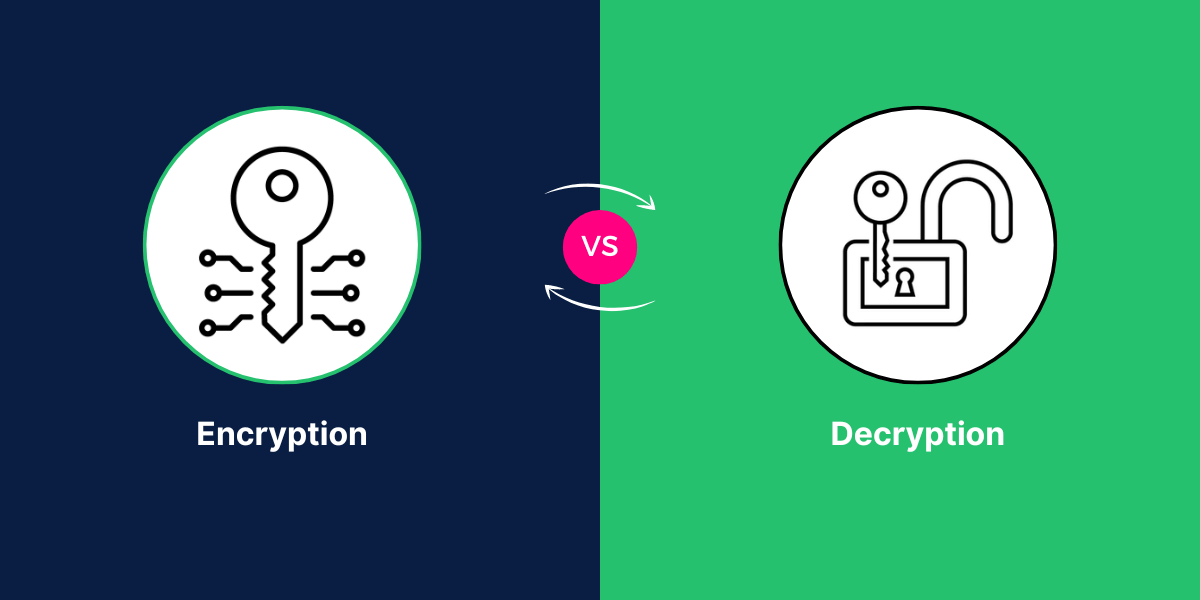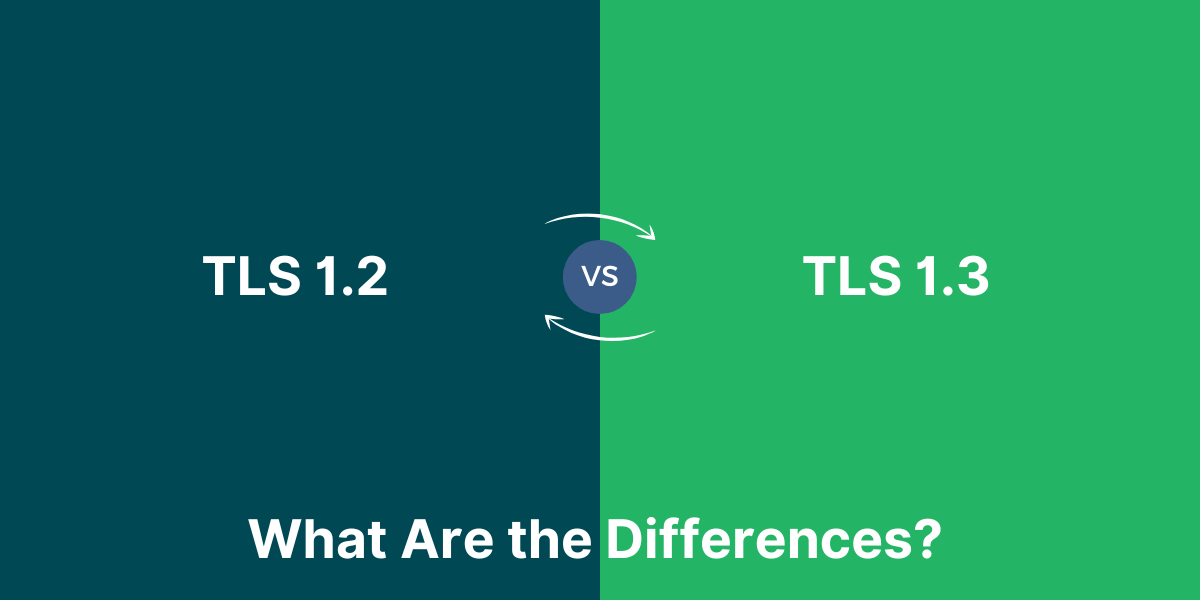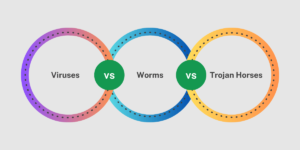Understanding the Difference Between Encryption and Decryption
Encryption and decryption are essential concepts in cryptography that help protect sensitive information and communications. Though the terms may sound similar, encryption and decryption are distinct processes that serve complementary purposes. This comprehensive guide examines the key differences between encryption vs decryption, how they work, why they matter for security, and some examples of encryption algorithms and applications. By the end, you’ll have a solid grasp of this critical crypto topic.
Key Takeaways
- Encryption converts plaintext data into ciphertext using an algorithm and key to prevent unauthorized access. Decryption reverses encryption, turning ciphertext back into readable plaintext using the key.
- Encryption ensures confidentiality by scrambling data so only authorized parties can access it. Decryption enables authorized recipients to access encrypted data.
- Symmetric encryption uses the same key for encryption and decryption. Asymmetric encryption uses different keys: a public key to encrypt and a private key to decrypt.
- AES and 3DES are common symmetric algorithms, while RSA and ECC are widely used asymmetric algorithms. Encryption secures data in transit and at rest.
- Proper key management is crucial for encryption security. Longer key lengths improve security but reduce performance. Both encryption and decryption are essential.
What is Encryption?
Encryption is the process of encoding plaintext data into ciphertext that looks like random gibberish to unauthorized parties. It uses an encryption algorithm and a key to transform information in its original form into an encrypted form.
Encryption ensures confidentiality by concealing the meaning of messages, data, and communications as they are stored or transmitted. It also helps prevent unauthorized access to sensitive information.
With encryption, even if an unauthorized party gains access to encrypted data, they will not be able to read or make sense of it. Only authorized recipients with access to the decryption key can decrypt and consume the plaintext data.
How Does Encryption Work?
The encryption process works using three core components:
- Plaintext: This is the original readable message or data to be encrypted. It could be text, numerical data, documents, images, files, communications, and more.
- Encryption Algorithm: This is a mathematical function or cipher that performs the encryption by applying a series of transformations to the plaintext. Common algorithms include AES, Blowfish, RC4, DES, and RSA.
- Encryption Key: This is a randomized string of bits used by the algorithm to encrypt the plaintext. The key introduces variability so that the same plaintext encrypts to different ciphertext each time. The key length impacts the security level.
Why is Encryption Important?
Encryption is a fundamental tool for security and privacy that is used to protect sensitive information in transit and at rest.
Here are some of the key benefits encryptions provides:
- Data Confidentiality: Encryption scrambles data so it cannot be read by unauthorized parties, ensuring it remains private and confidential. This protects data at rest on devices and in databases.
- Secure Communications: Encrypting communications and messages keeps them private from interception by third parties. This is essential for secure email, messaging, voice calls, and video chats.
- User Authentication: Encryption enables secure user identification and access control by verifying identities and permissions. It supports functions like user login.
- Data Integrity: Detecting unauthorized data tampering and manipulation helps ensure accuracy and trustworthiness. Common in uses like financial transactions and electronic signatures.
- Non-Repudiation: Proves transmission and origin of data to prevent denial of actions. They are used in sensitive activities like online payments and stock trades.
What is Decryption?
Decryption is the process of transforming encrypted ciphertext back into readable plaintext. It essentially reverses the encryption process using the encrypted data, a decryption algorithm, and the secret decryption key.
Authorized recipients use decryption to unlock access to the original plaintext data that was previously encrypted to protect its confidentiality during storage or transit. Think of decryption as unlocking encrypted information.
Whereas encryption promotes confidentiality, decryption enables access. Decryption allows authorized parties to consume and make use of the decrypted information.
How Does Decryption Work?
The decryption process requires:
- Ciphertext: The encrypted data to be decrypted. This is the scrambled output from the initial encryption process being reversed.
- Decryption Algorithm: A mathematical function that recovers the plaintext from the ciphertext based on the encryption algorithm used.
- Decryption Key: The secret key needed to correctly decrypt the ciphertext, which matches or correlates to the one used in encryption.
The algorithm uses the decryption key to transform the ciphertext back into readable plaintext by essentially undoing the steps performed during encryption. For the process to succeed, the decryption key must match the one used to encrypt the data originally.
Decryption restores access to authorized users. It fails for unauthorized parties needing the key to keep information protected. Proper key handling is vital for decryption and overall security.
Why is Decryption Important?
Decryption is crucial because encryption alone is not enough to ensure security and privacy. Information and data must be encrypted and decrypted appropriately to be useful.
The key importance of decryption includes:
- Enables access to and use of encrypted data for authorized recipients with the key.
- Allows encrypted communications, transactions, and protocols to function properly.
- Decryption keys can serve as proof of identity or permissions.
- It is necessary to support encryption key rotation and re-encryption over time.
- Vital fallback for emergency data recovery scenarios.
With authorized decryption, the ciphertext output from encryption has a lot of utility. Encryption and decryption work together to protect data confidentiality while still enabling access.
Key Differences Between Encryption vs Decryption
Encryption and decryption may seem identical or interchangeable, but there are important distinctions between the Encryption vs Decryption:
|
Encryption |
Decryption |
|
Converts plaintext to ciphertext |
Converts ciphertext back to plaintext |
|
Uses encryption algorithm + key |
Uses complementary decryption algorithm + key |
|
Promotes confidentiality |
Enables access and consumption |
|
Obscures meaning |
Recovers meaning |
|
Performed by sender |
Performed by recipient |
|
Prevents unauthorized access |
Allows authorized access |
|
“Locks” data |
“Unlocks” data |
While encryption and decryption are flip sides of the same coin, they serve different purposes. Encryption scrambles information to secure it. Decryption unscrambles information for authorized use.
Both are indispensable for protecting data confidentially while still enabling access by intended recipients. Using encryption without corresponding decryption would render data useless.
Symmetric Encryption vs. Asymmetric Encryption
There are two fundamental types of encryption algorithms based on the keys used:
Symmetric encryption uses the same cryptographic key for both encryption and decryption. The sender and receiver must have the same secret key.
Asymmetric encryption uses different keys for encryption and decryption, such as a public key and a private key. This enables broader key distribution than symmetric encryption.
| Symmetric Encryption | Asymmetric Encryption |
| Same key for encryption and decryption | Different paired public keys and private keys |
| Faster performance | Slower performance |
| Better for bulk data encryption | Better for small chunks of data |
| Key distribution is challenging | Public keys can be widely distributed |
| Algorithms like AES, 3DES | Algorithms like RSA, ECC |
Both symmetric and asymmetric encryption are important techniques and are widely used for data security in transit and at rest. Asymmetric encryption is frequently used to exchange symmetric encryption keys securely.
5 Common Encryption Algorithms and Protocols
There are many encryption algorithms and protocols available.
Here are 5 of the most prominent ones:
- AES (Advanced Encryption Standard): Symmetric algorithm standardized by NIST that uses block ciphers and key lengths of 128, 192, or 256 bits. Widely adopted and secure.
- RSA (Rivest–Shamir–Adleman): Asymmetric algorithm based on factoring the product of two large prime numbers. Key lengths from 1024 to 4096 bits. Public-key encryption standard.
- 3DES (Triple Data Encryption Algorithm): Applies DES cipher 3 times per data block using different keys. 168-bit key length. They are known for reliability.
- Blowfish: Symmetric algorithm using block ciphers, key-dependent S-boxes, and 64-bit block size. Keys from 32 to 448 bits in length. They are known for excellent performance and speed.
- ECC (Elliptic Curve Cryptography): Asymmetric algorithm based on algebraic elliptic curves over finite fields. Smaller keys than RSA offer equivalent security. They were used in blockchain.
How Encryption Secures Data in Transit and at Rest
Encryption protects both data in transit and data at rest through similar mechanisms adapted for each state:
Data in Transit
This refers to active data moving from one location to another, such as network communications, wireless transmissions, API calls, and file transfers. Encrypting data in transit keeps information secure while being communicated or exchanged.
Common examples include:
- Secure web browsing using HTTPS and SSL/TLS protocols
- Encrypted email and messaging with S/MIME and PGP
- Virtual Private Network (VPN) encryption for internet traffic and connections
- Disk and file encryption for data storage and backups
Data at Rest
This covers inactive data persistently stored on hardware in databases, servers, user devices, cloud platforms, backups, and other repositories. Encrypting data at rest protects information from unauthorized access or theft of stored data. Methods include:
- Full disk encryption on devices using BitLocker or FileVault
- Database encryption for fields containing sensitive data
- Encrypted virtual machine images in cloud computing
- Encrypted archives for long-term data storage
- Crypto wallets to secure digital assets and blockchain keys
Why is Key Management So Important for Encryption?
The encryption keys themselves need security protections since they control access to encrypted data. Key management is paramount for both symmetric and asymmetric encryption.
Vital practices include:
- Securely generate, store, and exchange encryption keys using trusted channels.
- Use key vaults or key management systems to control access and distribution of keys.
- Rotate and update keys periodically to limit any single key’s exposure over time.
- Carefully backup keys for availability, but store backup copies securely.
- Where possible, leverage hardware backups or hardware security modules for key protection.
- Control usage, sharing, and destruction of keys according to sound access policies.
- Use different keys for different purposes as per the principles of least privilege and separation of duties.
Encryption Key Length and Security Level
Longer encryption key lengths make cracking encryption more difficult for adversaries by exponentially increasing the number of potential keys. However, longer keys also require more computational resources.
Some guidelines around key length include:
- RSA keys: At least 2048 bits, but 4096 provides future-proofing.
- ECC keys: 256 or 384-bit keys are recommended for robust security.
- AES keys: 256-bit keys are standard, with 128 bits still considered secure.
- Use the longest key lengths feasible based on application performance needs.
- Continually evaluate the impact of new technology on recommended key lengths.
- Keys should be at least 128 bits or longer for good security.
Final Thoughts
Encryption and decryption provide the essential cryptographic capabilities that underpin data and communications security and privacy. Though similar, encryption and decryption serve distinct, complementary purposes.
Encryption protects confidentiality by scrambling plaintext data into ciphertext. Decryption enables access by converting ciphertext back into usable plaintext form for authorized parties. Both are indispensable for security.
Understanding encryption and decryption helps one appreciate how cryptography secures sensitive data and applications, such as online transactions, messaging, and data storage for individuals and businesses.
FAQs about Encryption and Decryption
What is the main difference between encryption and decryption?
The main difference is that encryption converts readable plaintext to unreadable ciphertext, while decryption reverses that process, turning ciphertext back into readable plaintext. Encryption secures data, and decryption accesses it.
Why are keys important in encryption?
Encryption keys are important because they provide the parameters required for the encryption algorithm to scramble the data securely. The key introduces randomness to enable different ciphertexts.
How is asymmetric encryption different from symmetric encryption?
Symmetric encryption uses the same key for encryption and decryption, while asymmetric encryption uses different paired public and private keys. This enables a wider distribution of public keys.
What are some common encryption algorithms?
Common symmetric encryption algorithms include AES, 3DES, Blowfish, RC4, and DES. RSA and ECC are widely used asymmetric encryption algorithms.
Where is encryption used to secure data?
Encryption secures sensitive data in transit, such as communications, and data at rest, such as databases, through methods like disk and database encryption. VPNs also rely on encryption.
How does encryption provide data confidentiality?
Encryption provides confidentiality by scrambling data using an algorithm and key so that unauthorized parties cannot read the ciphertext even if they access it. Only authorized users can decrypt it.
Why is proper encryption key management so important?
Since keys allow access to encrypted data, their management and protection are critical. Keys should be securely stored, rotated, and distributed to authorized parties only. Compromised keys jeopardize security.

Priya Mervana
 Verified Web Security Experts
Verified Web Security Experts
Priya Mervana is working at SSLInsights.com as a web security expert with over 10 years of experience writing about encryption, SSL certificates, and online privacy. She aims to make complex security topics easily understandable for everyday internet users.



